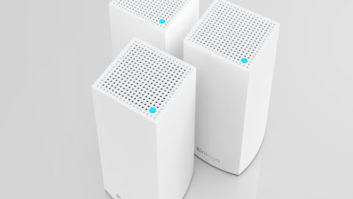NEW YORK – Aftermarket autosound suppliers, which have reported more compatibility issues with the iPhone 5 and iOS 6 than home audio suppliers, said they are working through some of the issues with some having already issued firmware updates to resolve some of the problems.
In select car audio head units, the issues range from a lack of music streaming from the iPhone 5 via Apple’s supplied Lightning-to-USB cable. Car issues also include intermittent or no stereo Bluetooth streaming from the iPhone 5 and iOS6-equipped Apple devices. In some cases, select head units lose wireless Bluetooth AVRCP control of music stored on iOS6 devices and the iPhone 5.
In the home, Imation has acknowledged Bluetoothstreaming dropouts in its TDK Life on Record Bluetooth speakers and is working on identifying the cause and possibly providing a firmware update.
Also in the home, Bang & Olfusen said a now-discontinued iPod/iPhone-docking speaker, when used with Apple’s planned Lightning-to-30-pin adapter, would sacrifice volume up/down and track control from its included IR remote.
The following companies, however, said their Bluetooth speakers work just fine with the iPhone 5 and iOS 6: Braven, iHome, Voxx’s Acoustic Research and RCA brands, and Parrot.
Component-audio suppliers haven’t provided information on whether their Bluetooth-equipped products or Bluetooth add-ons are working well with the new Apple releases.
Component-audio suppliers have also said they don’t expect the iPhone 5’s included Lightning-to- USB cable to present any problems when used with the Apple-certified USB ports on the AVRs and other home audio products, but most haven’t responded to requests for the results of tests that they planned. Yamaha said it did the tests and found no problems.
Home-audio suppliers have also said they expect their iPod/iPhone-docking speakers with 30-pin connectors to work with Apple’s planned Lightning-to-30- pin adapter for use with the iPhone 5, barring any issues with the physical stability of the iPhone 5. The companies, however, are waiting for the adapter to become available sometime this month to put their beliefs to the test.
For its part, Pioneer said it is testing is home and DJ products and will develop reference guides to “identify compatibility with the features and functions of its products,” the company said.
On the car side, Pioneer posted an autosound compatibility guide on its website (www.pioneerelectronics. com/ipod) showing incompatibilities with select models. The company hopes to resolve the issues, marketing VP Ted Cardenas told TWICE.
Here’s what Pioneer and other select vehicle-electronics companies have found in their tests to date.
Alpine: Alpine found that seven of its aftermarket head units won’t play back audio from Apple’s new Lightning-to- USB cable supplied with the iPhone 5, but the company has already issued firmware updates to restore the capability in three of the models. Firmware updates are available for the INE-S920HD, INE-Z928HD and IVE-W535HD. At press time, firmware updates hadn’t been announced for the iDA-X305S, iDA-X305, iDA-X100 and iDA-X001.
JVC: Preliminary tests show that the company’s current models with Apple-certified USB ports stream music stored on the iPhone 5 and new iPod Touch and Nano via Apple’s supplied Lightning-to-USB cable. The head units also continue to control song selection and display album art, said marketing GM Chad Vogelsong.
App Mode continues in current models with the feature to work as usual, enabling head units to control select iPhone 5 music-streaming apps, play back their music and display album art. Current head units with stereo Bluetooth also maintain Bluetooth functionality when used with the iPhone 5, he added.
In Japan, the company will conduct tests on previousgeneration head units, which have been using front-panel Apple-certified USB inputs since 2009.
Like other-brand head units with analog-video inputs, any JVC head unit with analog-video inputs won’t display video stored on the iPhone 5 and new iPod Touch. That’s because the phone and new touch no longer output analog video; they output digital video.
Because the Apple devices send out digital video, JVC’s App Link Mode in select head units also doesn’t work. That mode displays the user interfaces of select compatible apps on the iPhone 5, including navigation apps.
JVC and other suppliers will be working on a solution for this problem, he said.
Kenwood: The company said it expects Apple’s Lightning- to-30-pin adapters will resolve incompatibility problems between select current and older head units and the eight-pin Lightning connectors on Apple’s new iPhone 5, seventh-generation iPod Nano and fifth-generation iPod Touch.
Nonetheless, Kenwood is waiting to test the Apple adapters when they become available this month before confirming compatibility, said product manager Rick Noetzli.
The company, meanwhile, is also developing stereo- Bluetooth updates for its head units to make them compatible with the Bluetooth version used with the iOS 6 operating system on the iPhone 5 and available for download to the iPhone 4 and 4S and previous-generation iPod Touches. The new OS use Bluetooth 4.0 and AVRCP 1.4 (audio video remote control profile), which by definition should be backward-compatible with the Bluetooth 2.0 and AVRCP 1.3 versions used in Kenwood head units.
The compatibility problems include intermittent stereo Bluetooth dropouts on some models, lack of streaming on other models, and loss of play/pause control and metadata on some models when connected via wireless Bluetooth to iOS 6 devices.
Kenwood hopes to have a Bluetooth software update available “as soon as possible” for its head units, Noetlzi said.
Kenwood said its 2009 through 2012 CD receivers are compatible with the Lightning-to-USB cable supplied by Apple with its new mobile devices. The head units’ Made Car Security Combats Same Battles As Remote Start for iPod/iPhone USB ports will control music selection on the new Apple devices and stream the devices’ digital output to the head units. The heads will also control an iPhone 5’s Pandora Internet radio app, Kenwood said.
The Kenwood head units that are incompatible with the Apple’s devices’ supplied cable are all 2008 through 2010 DDX multimedia head units with DVD playback, most 2008 through 2012 DNX navigation/multimedia receivers, and all KIV mech-less head units, which lack CD mechanism. Kenwood expects compatibility will be restored with one of Apple’s Lightning-to-30-pin adapters but is waiting for the adapters to become available to confirm compatibility.
Here’s why: These Kenwood head units connect to iPhones and iPods via an optional Kenwood-supplied adapter cable that connects on one side to the 30-pin connectors of previous-generation Apple devices. The other side of the cable splits off into a USB connection, which plugs into the head units’ front-panel USB for controlling the Apple devices, and an analog minijack, which transfers analog audio to the head units.
Apple’s planned Lightning-to-30-pin adapters could restore compatibility because they incorporate a digital-to-analog converter (DAC) that would send an analog audio signal to the Kenwood heads from the new Apple devices, which spit out only digital audio through Lightning.













